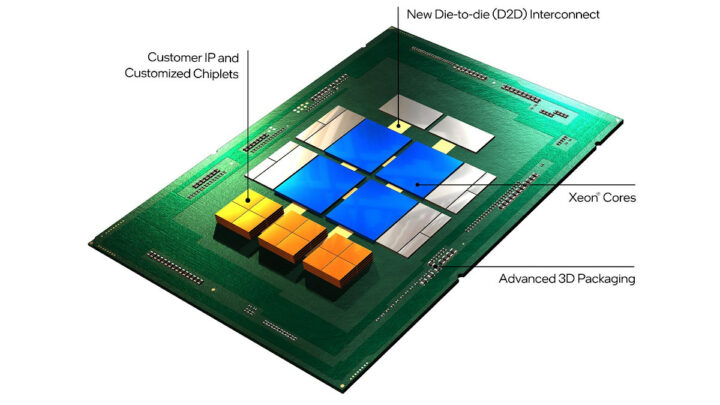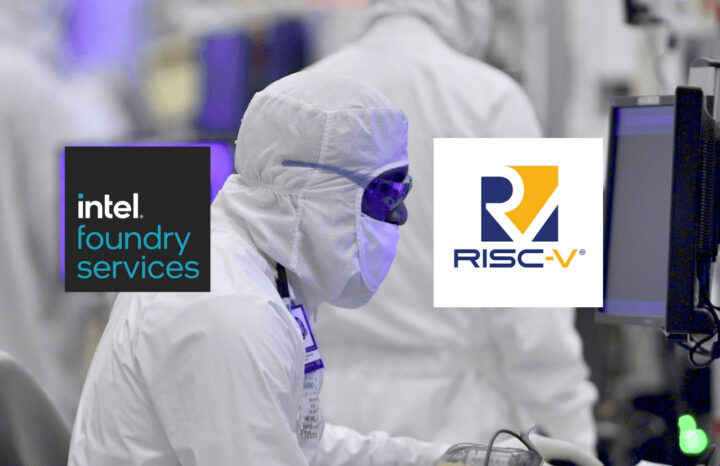Intel has just announced a $1 billion fund to support companies bringing innovations and new technologies to the foundry ecosystem. The company says the fund will prioritize investments in “capabilities that accelerate foundry customers’ time to market – spanning intellectual property (IP), software tools, innovative chip architectures, and advanced packaging technologies.”
What’s interesting is that it does not only cover x86 architecture but also Arm and RISC-V, with a focus on the latter, as Intel has just become a Premier member of RISC-V International, and partnered with several companies offering RISC-V solutions including Andes Technology, Esperanto Technologies, SiFive, and Ventana Micro Systems.
Intel’s Open Chiplet Platform
 Part of the investment will go to the Open Chiplet Platform offering a modular approach to chip design through chiplets with each block/chiplet customized for a particular function. This will allow designers to select the best IP and process technologies for a particular SoC.
Part of the investment will go to the Open Chiplet Platform offering a modular approach to chip design through chiplets with each block/chiplet customized for a particular function. This will allow designers to select the best IP and process technologies for a particular SoC.
Intel says it will first be used in the data center market where cloud service providers (CSPs) are looking to create customized SoCs with accelerators in order to improve the performance and efficiency of specific workloads such as artificial intelligence. The Open Chiplet Platform should be expanded to other segments in the future as well.
Intel and RISC-V
Intel says its Intel Foundry Services (IFS) is the only foundry to offer IP optimized for all three of the industry’s leading ISAs: x86, Arm and RISC-V, the bulk of the announcement focused on the “open RISC-V ecosystem”. This will include partner products manufactured on IFS technologies, RISC-V cores licensed as differentiated IP, and chiplet building blocks based on RISC-V.
Four companies have partnered with Intel so far:
- Andes Technology AndeStar V5 RISC-V CPU IP line from the 25-series, 27-series and 45-series are available for IFS customers with hardware evaluation kits and software solutions.
- Esperanto Technologies‘ general-purpose parallel processing solution with over a thousand RISC-V vector/tensor cores will be integrated into chiplets using IFS’ portfolio of IP, packaging, and end-to-end silicon manufacturing and supply chain.
- SiFive has made its entire portfolio of cores available on IFS technologies. SiFive and Intel also previously announced collaboration on Intel’s “Horse Creek” SoC powered by the SiFive Performance P550 processor to build a scalable compute platform and development system board, which will be used for software enablement starting in Q2 2022. There were rumors about Intel acquiring SiFive a while ago, but instead, the two companies just partnered.
- Ventana Micro Systems will offer a scalable, customizable compute platform that combines its high-performance multi-core chiplets with an IO Hub manufactured by IFS, and leverages IFS’ portfolio of connectivity IP, packaging, and supply chain. The platform will target data centers, AI/ML accelerators, IPU/DPU, Networking, Storage, Security, Automotive and 5G/edge. The company will also offer its data center-class cores as IP on IFS’ “cutting-edge” manufacturing process
IFS will also sponsor an open-source software development platform, but no details were provided. I assume it will be offered with the “Horse Creek” development board.
More information may be found in the announcements on Intel and RISC-V international websites.

Jean-Luc started CNX Software in 2010 as a part-time endeavor, before quitting his job as a software engineering manager, and starting to write daily news, and reviews full time later in 2011.
Support CNX Software! Donate via cryptocurrencies, become a Patron on Patreon, or purchase goods on Amazon or Aliexpress





